LAB REPORT
Science and Technology Making Headlines
Aug. 26, 2016

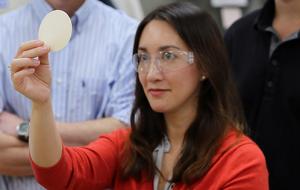
Lab researcher Jennifer Rodriguez examines a 3D printed box that was "programmed" to fold and unfold when heated. Photo by Julie Russell/LLNL.
Going beyond your 3D printing
Lawrence Livermore researchers have demonstrated the ability to 3D print objects that can change shape, even folding and unfolding, when heated through an electrical current or with ambient air temperature.
The scientists used what they described as "smart ink" made from soybean oil along with polymers and carbon nanofibers, which they were able to program into a temporary shape at an engineered temperature that was determined by the chemical composition.
The technology could have applications in health care, in aerospace for solar arrays or antennae that can unfold and for flexible circuits and robotic devices.
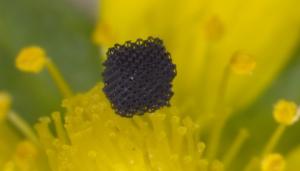
Lawrence Livermore researchers have made graphene aerogel microlattices with an engineered architecture via a 3D printing technique known as direct ink writing. Illustration by Ryan Chen/LLNL
The best of the best
3D printing with carbon fiber may already be in use, but some already are looking to carbon fiber’s miraculous cousin, graphene. With a thickness of a single carbon atom, graphene is about 100 times stronger than steel, incredibly lightweight and electrically and thermally conductive.
Several research endeavors have demonstrated the ability to 3D print purer versions of the stuff, including scientists at Imperial College and Lawrence Livermore National Laboratory (LLNL).
The difficulty of 3D printing with graphene is the inability to deposit this hydrophobic material from a print head. While the Imperial College London team actually 3D prints with graphene-oxide combined with a responsive polymer in order to extrude the material as a paste, LLNL 3D printed graphene-oxide into a silica gel.

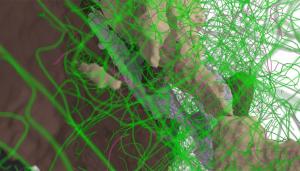
LLNL scientists have developed a 3D printing technique to make metal.
Tour a top secret lab
Lawrence Livermore National Laboratory just pulled back its curtains with two behind-the-scenes looks, one of their National Ignition Facility (featuring the world’s largest laser) and another of three of its 3D printing labs. Together with an overview of some of LLNL’s latest innovations, you get a pretty good idea of what goes on in the national laboratory. `
While the Lab is well known for its 3D printing, it’s actually a huge organization employing thousands of scientists working on countless innovations. LLNL scientists have built some of the world’s fastest supercomputers, have put five new elements on the periodic table and are even working on tech that can deflect asteroids.
Public access to LLNL is limited for good reason, given that its scientists and engineers are responsible for certifying the safety, security and reliability of the U.S. nuclear deterrent in a post-nuclear-test world.

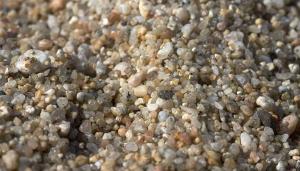
LLNL researchers have measured how force moves through 3D granular materials such as sand and soil. Photo by Sean O’Flaherty.
Feel the force
Processes ranging from earthquakes to the flow of wheat through a silo involve grains that push against one another. The transmission of forces during these events determines if and how fractures form or whether the grains jam and stop flowing. While a force map can be acquired from particles that lie in a plane or are transparent, doing the same for a 3D pile of opaque sand has, until now, only been possible with computer simulations.
Lawrence Livermore’s Ryan Hurley and collaborators have now developed a technique for directly measuring contact forces in sand piles, providing real data on the distribution of forces within a granular system.
Understanding how forces move through granular materials is important for building models and predicting the behavior of geologic materials such as sands and soils when they fracture and flow during hydraulic fracturing and when they are penetrated to defeat buried enemy targets.

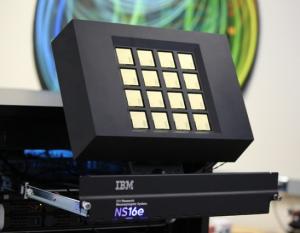
Lawrence Livermore received the 16-chip IBM TrueNorth platform this spring.
Leaping ahead
Steadily advancing neuromorphic computing technology has created high expectations for this fundamentally different approach to computing. Its strengths — like the human brain it attempts to mimic — are pattern recognition (space and time) and inference reasoning. Advocates say it also will be possible to compute at much lower power than current paradigms.
IBM’s TrueNorth uses the TrueNorth chip implemented in CMOS. Since memory, computation and communication are handled in each of the 4,096 neurosynaptic cores, TrueNorth is energy-efficient, consuming 70 milliwatts, about 1/10,000th the power density of conventional microprocessors.
This spring, IBM announced a collaboration with Lawrence Livermore National Laboratory in which it will provide a scalable TrueNorth platform expected to process the equivalent of 16 million neurons and 4 billion synapses and consume the energy equivalent of a hearing aid battery – a mere 2.5 watts of power.





